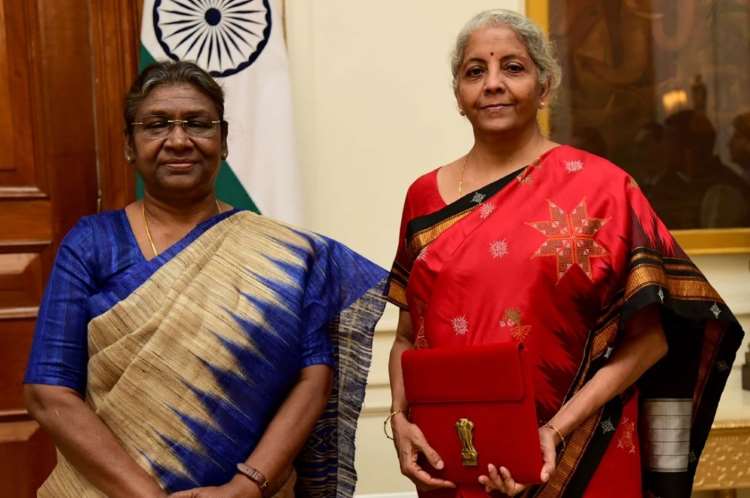Union Finance Minister Nirmala Sitharaman presented the Budget 2023 for the upcoming fiscal year on Wednesday, terming it as a budget for the middle class. The government said that the focus of the budget is on providing a booster to growth and job creation. The other two were facilitating ample opportunities for citizens, especially the youth, and the strengthening of macroeconomic stability at a time when the world economies are facing headwinds from geopolitical situations. A major change towards that end is in income tax slabs with zero tax effective tax rates for income below Rs 7 lakh from earlier Rs 5 lakh.
For the upcoming financial year 2023-24, the budget has reduced the fiscal deficit target to 5.9% of the GDP. Last year, the same was set to 6.4% for FY23. The finance minister has reiterated to bring the fiscal deficit below 4.5% of GDP by 2025-26.
READ | Economic Survey 2022-23: Inflation, current account concerns for next year
The government is currently facing challenges on various fronts with the Indian economy mired in a host of global factors, steep rise in inflation and a possible GDP growth slowdown in FY24. According to the Economic Survey presented on Tuesday, the growth forecast has been lowered from 7% to 6 to 6.8%. Even then, India is likely to remain the fastest growing major economy. Other than inflation, the government is also worried about rising current account deficit. It is no brainer that the government is placing major importance on widening the scope of economic growth with ample focus on infrastructure, job creation and manufacturing.
Here are the highlights of Budget 2023
Indian economy presents hope
In her speech, Finance Minister Nirmala Sitharaman said that the Indian economy is on the right track despite challenges on various fronts and is heading towards a bright future. The government is focusing on wide ranging reforms and policies which have in the past too helped the Indian economy wade through tough times.
Income tax regime revised to provide relief to middle class
Keeping the current macroeconomic circumstances in mind, it was expected that the government will provide some relief on the tax front to help India’s middle class. The government has delivered on the same and the income tax rebate has been extended on income up to Rs 7 lakh, under the new income tax regime.
A major flexibility has also been introduced under the new tax regime. The new tax rates are 0 to Rs 3 lakhs – nil, Rs 3 to 6 lakhs – 5%, Rs 6 to 9 Lakhs – 10%, Rs 9 to 12 Lakhs – 15%, Rs 12 to 15 Lakhs – 20% and above 15 Lakhs – 30%.
Free food grain scheme under PMGKAY
The government has implemented a scheme to supply free food grains to priority households for the next one year, under its PM Garib Kalyan Anna Yojana. The exchequer will bear about Rs 2 lakh crore for the same.
Saptarishis to guide Indian economy
The finance minister said that there are seven guides or saptarishis which are central to the government’s vision for the Union Budget. These are inclusive development, reaching the last mile, infrastructure and investment, unleashing the potential, green growth, youth power and financial sector. The government will also strive for technology-driven growth and a knowledge-based economy.
Agriculture gets a boost
To help the farmers get access to affordable solutions, the finance minister made several announcements. The agricultural credit target will be increased to Rs 20 lakh crore, with focus on animal husbandry, dairy and fisheries. A new sub-scheme with an investment of Rs 6,000 crores has also been announced which is aimed at activities of fishermen and fish vendors.
Health education and skilling
Among major announcements in the sector, the government has said that it will set up a National Digital Library for children and adolescents. This will not only facilitate the availability of quality books across geographies, languages, genres and levels and device-agnostic accessibility, but it will also help in bridging the education gap that was made during the coronavirus pandemic.
The finance minister also said that new nursing colleges will be established in co-location with the existing 157 medical colleges established since 2014.
Outlay for PM Awas Yojana increased
The outlay for the government’s ambitious Pradhan Mantri Awas Yojana to provide affordable housing to the urban poor, has also been revised upwards by 66% to over Rs 79,000 crore.
Capital investment hike
Finance Minister Nirmala Sitharaman also announced a hike in capital investment outlay by 33% to Rs 10 lakh crore. This accounts for 3.3% of GDP.
Railway outlay at Rs 2.40 lakh crore
The railways is one of the core area for economic development and the sector required major boost for various projects such as electrification. To that end, the finance minister announced that the total outlay for the Indian Railway budget will be Rs 2.40 lakh crore. This is nine times more than the total outlay in 2013-14.
PAN to become a common identifier
For business establishments required to have a Permanent Account Number, the PAN will be used as a common identifier for all Digital Systems of specified government agencies.
Revision in Customs duty on certain items
basic customs duty rates on goods other than textiles and agriculture should be reduced from 21% to 13%. As a result, there will be minor changes in the basic customs duties, cesses and surcharges on some items including toys, bicycles and automobiles. The customs duty on cigarettes has gone up once again.

